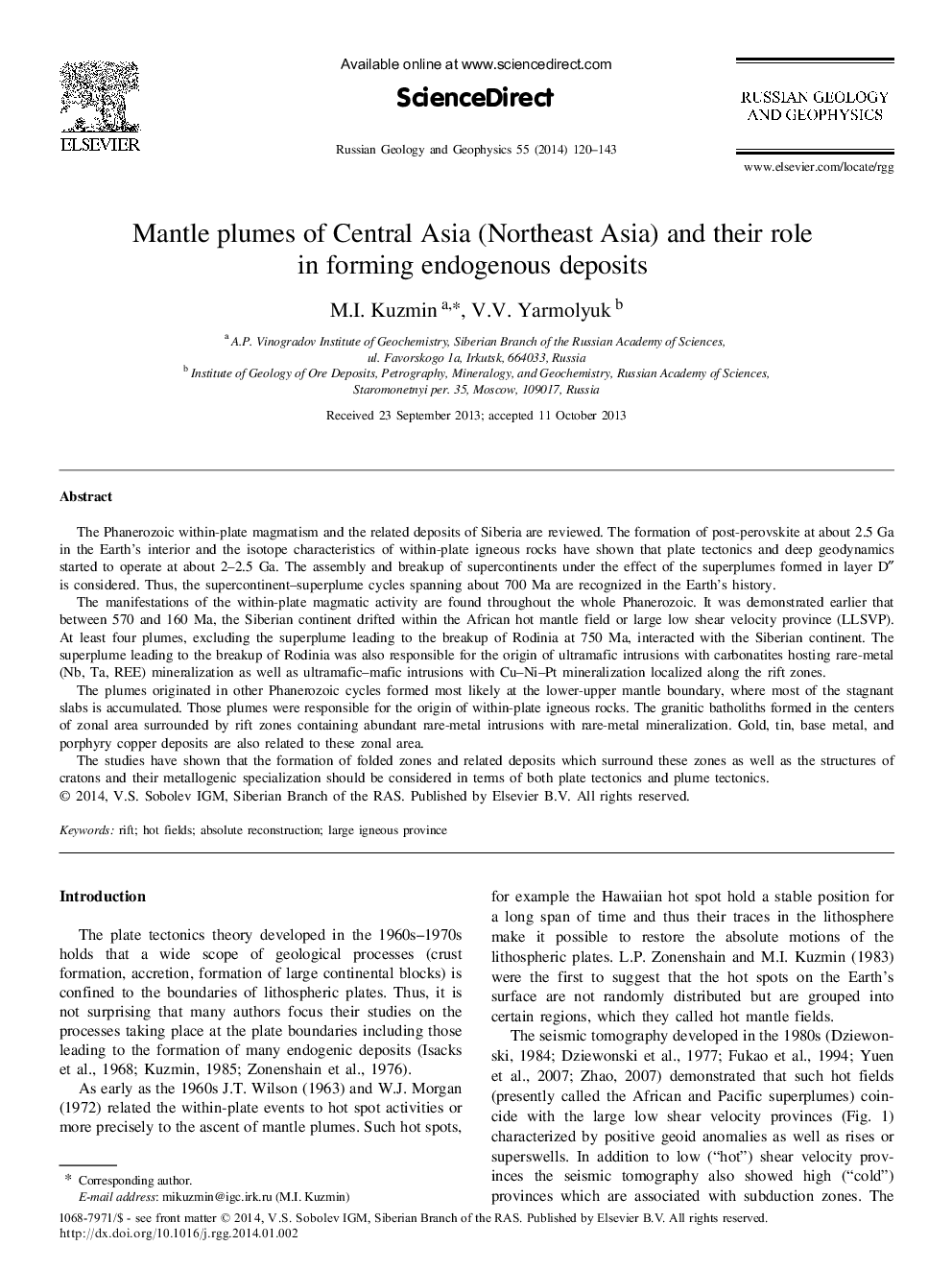| Article ID | Journal | Published Year | Pages | File Type |
|---|---|---|---|---|
| 4739099 | Russian Geology and Geophysics | 2014 | 24 Pages |
The Phanerozoic within-plate magmatism and the related deposits of Siberia are reviewed. The formation of post-perovskite at about 2.5 Ga in the Earth’s interior and the isotope characteristics of within-plate igneous rocks have shown that plate tectonics and deep geodynamics started to operate at about 2–2.5 Ga. The assembly and breakup of supercontinents under the effect of the superplumes formed in layer D″ is considered. Thus, the supercontinent–superplume cycles spanning about 700 Ma are recognized in the Earth’s history.The manifestations of the within-plate magmatic activity are found throughout the whole Phanerozoic. It was demonstrated earlier that between 570 and 160 Ma, the Siberian continent drifted within the African hot mantle field or large low shear velocity province (LLSVP). At least four plumes, excluding the superplume leading to the breakup of Rodinia at 750 Ma, interacted with the Siberian continent. The superplume leading to the breakup of Rodinia was also responsible for the origin of ultramafic intrusions with carbonatites hosting rare-metal (Nb, Ta, REE) mineralization as well as ultramafic–mafic intrusions with Cu–Ni–Pt mineralization localized along the rift zones.The plumes originated in other Phanerozoic cycles formed most likely at the lower-upper mantle boundary, where most of the stagnant slabs is accumulated. Those plumes were responsible for the origin of within-plate igneous rocks. The granitic batholiths formed in the centers of zonal area surrounded by rift zones containing abundant rare-metal intrusions with rare-metal mineralization. Gold, tin, base metal, and porphyry copper deposits are also related to these zonal area.The studies have shown that the formation of folded zones and related deposits which surround these zones as well as the structures of cratons and their metallogenic specialization should be considered in terms of both plate tectonics and plume tectonics.
